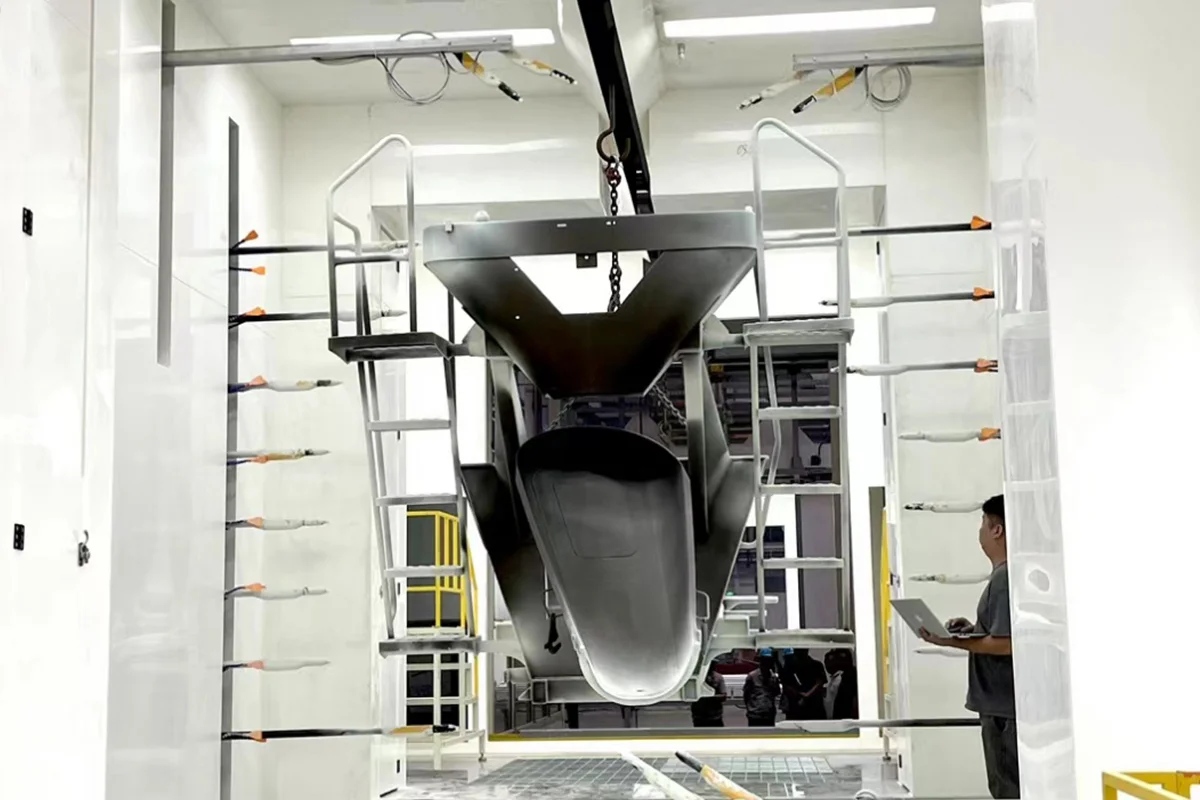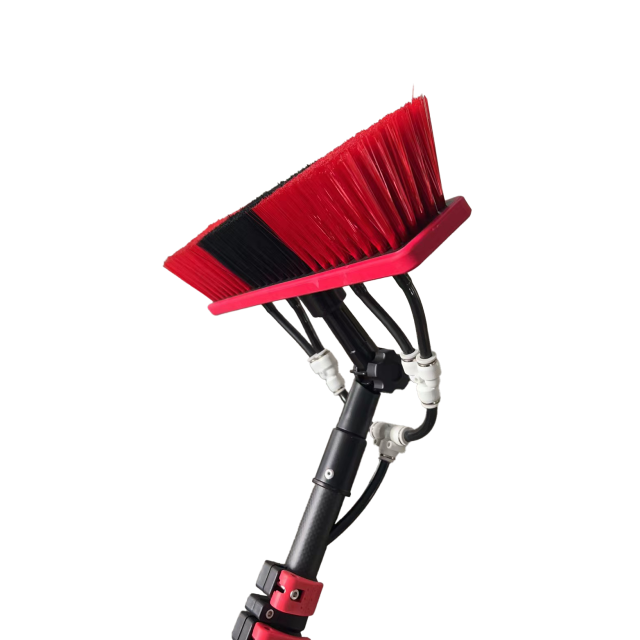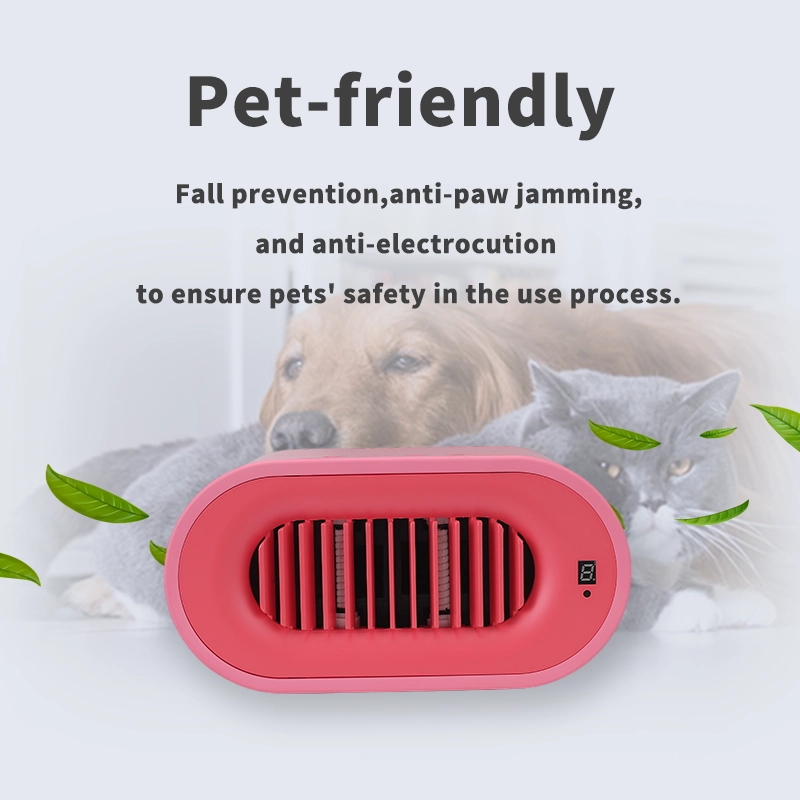An automated powder coating line is a fully integrated surface treatment solution widely applied in modern manufacturing industries. By combining precision engineering, electrostatic principles, and intelligent control, it achieves efficient, consistent, and eco-friendly coating results. This technology has replaced many traditional painting methods, offering advantages in quality, productivity, and sustainability. In this blog post, Lexuan Intelligent Equipment, as one of the high quality powder coating equipment suppliers, will share the working principle of automated powder coating line, its process flow, etc.
Understanding the Working Principle of Powder Coating Automation
The automated powder coating line operates on the principle of electrostatic adsorption. In this process, electrically charged powder particles are sprayed onto the surface of grounded workpieces. The electrostatic attraction ensures a uniform coating layer that adheres tightly to the material. Afterward, the coated components enter a curing oven, where heat melts the powder particles, forming a durable and glossy surface film.
The combination of mechanical automation and electrostatic technology not only ensures consistency but also significantly reduces material waste, achieving higher efficiency and cost control across production lines.
Comprehensive Process Flow of Automated Powder Coating Line
A modern powder coating production line typically consists of four major stages—pre-treatment, coating, curing, and post-treatment—each crucial for achieving high-quality results.
1. Pre-Treatment Stage
Before coating begins, workpieces undergo multiple surface cleaning and activation steps to ensure adhesion and corrosion resistance.
-
Degreasing: Removes oil, dirt, and machining residues using alkaline or neutral cleaning agents.
-
Rinsing: Flushes off all remaining cleaning solutions.
-
Surface Conditioning: Improves the microstructure for better coating uniformity.
-
Phosphating or Conversion Coating: Creates a corrosion-resistant film layer.
-
Final Rinse & Drying: Prepares a clean, moisture-free surface ready for powder application.
2. Powder Coating Stage
In this step, electrostatic spray guns apply the powder uniformly across all exposed surfaces. Automated robotic arms or conveyor systems control the process, maintaining precision and reducing operator errors. For complex geometries, manual touch-up stations are added to guarantee complete coverage.
3. Curing Stage
After coating, the parts move into a curing oven, where controlled heating fuses the powder into a hard, durable layer. Typical curing temperatures range between 160°C–200°C. Once curing is complete, the workpieces are naturally or forcibly cooled to stabilize the coating.
4. Post-Treatment Stage
Quality assurance takes place in the final phase.
-
Inspection: Measures coating thickness, gloss, and adhesion.
-
Repair: Addresses minor defects or coating inconsistencies.
-
Packaging: Prepares products for delivery under clean and safe conditions.

Key Advantages of Automated Powder Coating Line Technology
The adoption of automated powder coating systems delivers measurable benefits across multiple dimensions of production and sustainability.
High Efficiency and Productivity
Automation ensures continuous, stable operation, with conveyor lines running at adjustable speeds. High powder recovery rates—often exceeding 98%—reduce material waste and cost per unit.
Energy Saving and Cost Reduction
Modern powder coating ovens utilize intelligent temperature control and heat recovery systems, minimizing energy consumption while ensuring uniform curing.
Superior Coating Quality
Electrostatic application results in even powder distribution, strong adhesion, and smooth surface texture. The coating layer offers excellent corrosion, wear, and UV resistance, extending product lifespan even in harsh environments.
Environmentally Friendly Operation
Unlike liquid painting, powder coating emits no volatile organic compounds (VOCs) or hazardous air pollutants. Overspray can be fully recycled, aligning with modern green manufacturing standards.
High Automation and Flexibility
With programmable logic controllers (PLC), robotic sprayers, and intelligent sensors, the line automatically adjusts to product size, coating thickness, and process speed. This ensures flexibility for diverse manufacturing requirements without compromising efficiency.
Diverse Industrial Applications of Automated Powder Coating Lines
The automated powder coating line plays a critical role across a wide range of industries:
Home Appliance Manufacturing
Used for refrigerators, washing machines, and air conditioner casings, powder coatings offer long-lasting gloss, scratch resistance, and color stability.
Automotive Industry
From car wheels and bumpers to chassis components, powder coatings protect against corrosion, abrasion, and weathering while improving visual appeal.
Construction and Building Materials
Aluminum doors, windows, curtain walls, and structural steel benefit from durable, fade-resistant coatings that withstand outdoor exposure.
Furniture and Office Equipment
Metal furniture frames, shelves, and office partitions coated with powder achieve both decorative and protective performance.
Electronics and General Hardware
Powder-coated housings, panels, and brackets ensure electrical insulation and consistent surface finish across consumer electronics and machinery.
Smart Control and Digitalization in Modern Powder Coating Line
With the rise of Industry 4.0, the automated powder coating line has evolved into a data-driven, intelligent production system. Integration with IoT platforms enables real-time monitoring of temperature, humidity, air pressure, and powder feed rate. Predictive maintenance algorithms minimize downtime, while digital dashboards allow operators to track performance metrics remotely.
Artificial intelligence and robotic coordination also enhance process precision—automatic gun distance adjustment, coating uniformity feedback, and real-time defect detection are now achievable with advanced control software.
Sustainability and Future Trends in Powder Coating Technology
The future of automated powder coating technology lies in improving sustainability, material innovation, and energy optimization. Manufacturers are developing low-temperature curing powders to reduce energy use, while new bio-based and recyclable powder materials minimize environmental impact.
Additionally, hybrid coating systems that combine powder and liquid layers are gaining traction for specialized applications, offering superior performance in adhesion and aesthetics. As automation and digital monitoring advance, fully closed-loop, zero-emission coating lines are becoming the new benchmark in industrial finishing.
Conclusion
The automated powder coating line represents a fusion of precision engineering, green technology, and smart manufacturing. By automating every stage—from surface preparation to curing and inspection—it delivers unmatched consistency, cost efficiency, and environmental performance.
As industries continue to pursue sustainability and high-quality production, automated powder coating solutions will remain a cornerstone of modern surface finishing technology—driving innovation, efficiency, and a cleaner manufacturing future.
www.lexuaneqpt.com
Lexuan Intelligent Equipment


